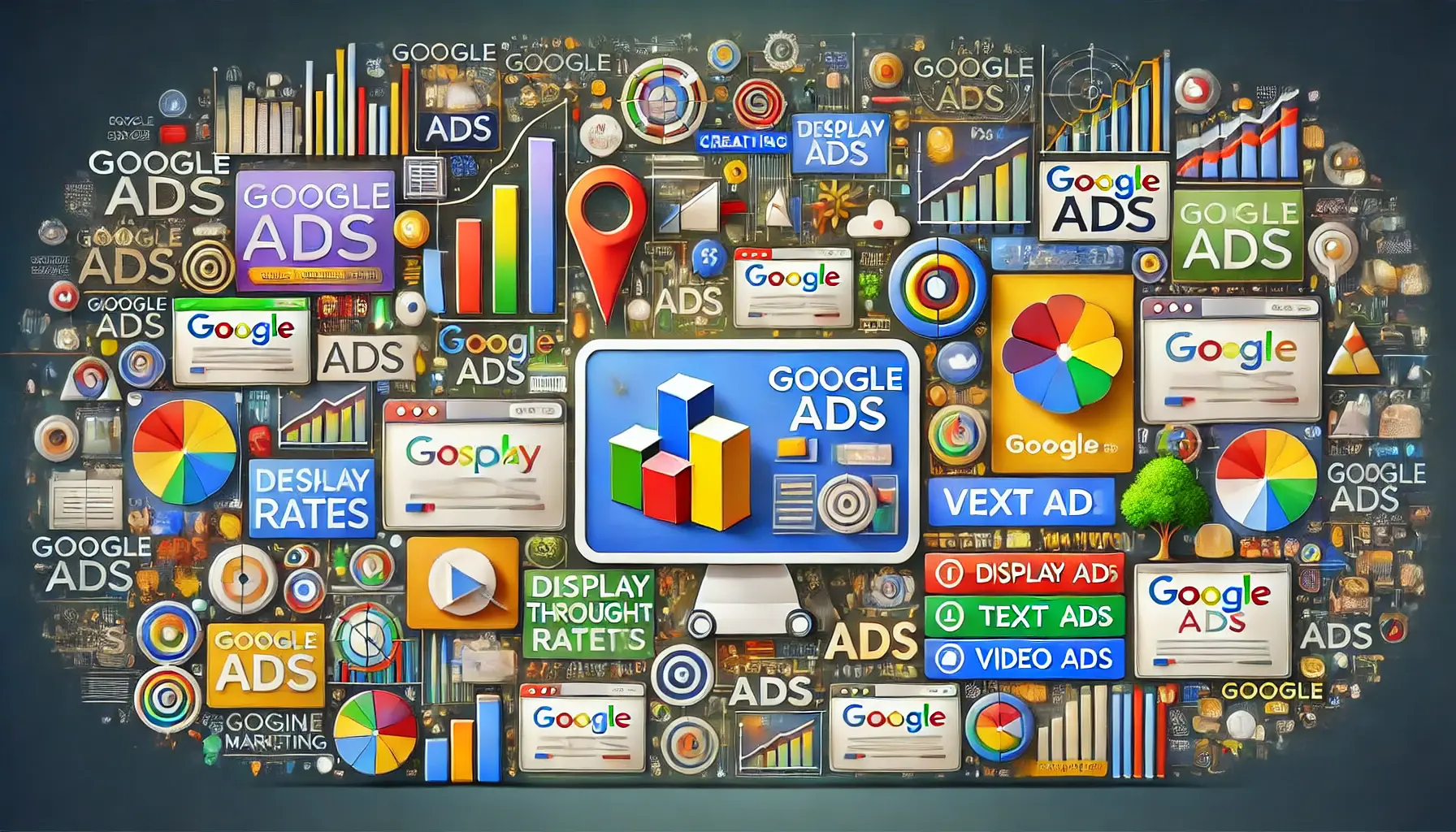Exploring the dynamic world of digital advertising, one cannot overlook the pivotal role that ad variations play in steering the success of online marketing campaigns.
The concept of ad variations, particularly within the realm of Apple Search Ads, stands as a cornerstone strategy for marketers aiming to optimize their conversion rates.
This exploration delves into how subtle changes in ad presentation, messaging, and creative elements can significantly influence the behavior of potential customers.
By dissecting the mechanics behind ad variations, this article aims to provide a comprehensive understanding of their impact on conversion rates, offering valuable insights for marketers striving to enhance their advertising efficacy.
The significance of ad variations extends beyond mere aesthetic adjustments; it encompasses a strategic approach to testing and refining advertising efforts to resonate with diverse audience segments.
In an era where consumer preferences are ever-evolving, the ability to adapt and tailor advertising content becomes crucial.
Through a meticulous examination of ad variation strategies, including A/B testing and the analysis of performance metrics, this article seeks to uncover the nuances of how ad variations can be leveraged to maximize conversion rates.
By focusing on empirical evidence and industry best practices, we aim to equip marketers with the knowledge to craft more effective ad campaigns that not only capture attention but also convert interest into tangible actions.
- Understanding Ad Variations
- The Science of A/B Testing in Ad Variations
- Optimizing Ad Content for Higher Engagement
- Leveraging Technology for Ad Variation Success
- Understanding Audience Segmentation
- Maximizing ROI with Strategic Ad Placement
- Future Trends in Ad Variations and Conversion Optimization
- Conclusion: Harnessing the Power of Ad Variations for Enhanced Conversion Rates
- FAQs: Maximizing Conversion Rates with Ad Variations
Understanding Ad Variations
At its core, ad variation refers to the process of creating multiple versions of an advertisement to test how different elements affect viewer engagement and conversion rates.
This method is instrumental in identifying which variations of an ad are most effective at compelling users to take a desired action, such as making a purchase or signing up for a newsletter.
The essence of ad variations lies in their ability to provide actionable insights into consumer preferences and behavior, enabling marketers to refine their strategies for optimal performance.
Ad variations can encompass a wide range of elements, from headlines, descriptions, and call-to-actions (CTAs), to images, videos, and landing page designs.
By systematically altering these components and analyzing the outcomes, advertisers can gain a deeper understanding of what resonates with their target audience.
This iterative process not only enhances the effectiveness of individual ads but also contributes to a more engaging and personalized user experience, ultimately driving higher conversion rates.
Key Components of Ad Variations
The implementation of ad variations involves several key components, each playing a vital role in the ad’s overall performance.
Headlines, for instance, serve as the initial point of contact with the audience, making their impact on engagement and conversion rates profound.
Similarly, the creative use of visuals and CTAs can significantly influence user behavior, guiding them towards the desired action.
By experimenting with different combinations of these elements, advertisers can uncover valuable insights into what drives conversions within their specific market niche.
Furthermore, the role of landing pages in the ad variation testing process cannot be overstated.
The alignment between the ad’s message and the landing page content is crucial for maintaining user interest and facilitating a smooth transition towards conversion.
Effective ad variations ensure that the user’s journey from ad click to landing page is seamless and aligned with their expectations, thereby increasing the likelihood of conversion.
The strategic application of ad variations enables marketers to optimize their advertising campaigns, tailoring their approach to meet the unique preferences of their target audience and drive higher conversion rates.
The Science of A/B Testing in Ad Variations
A/B testing, also known as split testing, stands as a fundamental component in the realm of ad variations, offering a scientific approach to comparing the performance of different ad versions.
This methodical process involves presenting two variants of an ad to similar audiences and analyzing which one performs better in terms of conversion rates.
A/B testing is not just about changing an element for the sake of variety; it’s a strategic exploration aimed at understanding how specific changes can influence user behavior and decision-making processes.
The power of A/B testing lies in its ability to provide empirical evidence on the effectiveness of ad variations.
By isolating variables and measuring their impact, marketers can make data-driven decisions that significantly enhance the performance of their advertising campaigns.
This approach ensures that every adjustment to an ad is justified by its potential to improve conversion rates, making A/B testing an indispensable tool for optimizing ad variations.
Implementing Effective A/B Testing Strategies
- Define Clear Objectives: Before launching an A/B test, it’s crucial to establish clear, measurable goals. Whether it’s increasing click-through rates, boosting conversions, or enhancing user engagement, having a specific target in mind guides the testing process and ensures meaningful results.
- Select Variables Wisely: Deciding which elements to test is a critical step in A/B testing. Focus on variables that are likely to have a significant impact on user behavior, such as headlines, images, or CTAs. Testing one variable at a time helps in pinpointing the exact factors that influence performance.
- Ensure Statistical Significance: To draw reliable conclusions from A/B tests, it’s essential to reach statistical significance. This means running the test long enough to collect sufficient data, ensuring that the results are not due to chance.
- Analyze and Apply Findings: After completing the A/B test, analyze the data to determine which ad variation performed better. Use these insights to refine your ad strategy, applying the successful elements to future campaigns for improved conversion rates.
By incorporating A/B testing into the ad variation process, marketers can systematically enhance their advertising efforts.
This not only leads to higher conversion rates but also contributes to a deeper understanding of the target audience’s preferences and behaviors.
A/B testing empowers advertisers to make informed decisions, transforming guesswork into a strategic, evidence-based approach to ad optimization.
Incorporating A/B testing into your ad variation strategy is a powerful way to discover what truly resonates with your audience, leading to more effective and successful advertising campaigns.
Optimizing Ad Content for Higher Engagement
Creating compelling ad content is pivotal in capturing the attention of your audience and driving higher engagement rates.
The essence of optimizing ad content lies in crafting messages that resonate with the target audience, encouraging them to interact with the ad and ultimately convert.
This involves a delicate balance of creativity, relevance, and clarity to ensure that the ad not only attracts attention but also clearly communicates its value proposition.
To optimize ad content for higher engagement, it’s essential to understand the preferences and pain points of your target audience.
Tailoring your message to address these specific needs and interests can significantly increase the relevance of your ad, making it more appealing to potential customers.
Moreover, incorporating a clear and compelling call-to-action (CTA) encourages users to take the next step, whether it’s visiting a website, making a purchase, or signing up for a newsletter.
Key Strategies for Ad Content Optimization
- Personalization: Customize ad content to reflect the interests and behaviors of your target audience. Using data-driven insights, create variations that speak directly to different segments, enhancing the personal connection and relevance of your ads.
- Clarity and Conciseness: Ensure that your ad message is straightforward and easy to understand. Avoid jargon and complex language that might confuse the audience. A clear, concise message is more likely to engage users and prompt action.
- Emotional Appeal: Leverage emotional triggers to connect with your audience on a deeper level. Whether it’s humor, excitement, or empathy, incorporating emotions into your ad content can significantly boost engagement and conversion rates.
- Visual Impact: Use high-quality images, videos, and graphics to make your ad stand out. Visual elements play a crucial role in attracting attention and can be highly effective in conveying your message in an engaging and memorable way.
- Test and Refine: Continuously test different aspects of your ad content, from headlines to visuals, to identify what works best. Use the insights gained from testing to refine your approach and improve the effectiveness of your ads.
Optimizing ad content is not a one-time task but an ongoing process of testing, learning, and refining.
By focusing on creating ads that are not only visually appealing but also deeply resonant with your target audience, you can significantly enhance engagement rates.
This, in turn, leads to higher conversion rates, as engaged users are more likely to take the desired action.
Through strategic optimization of ad content, advertisers can create powerful campaigns that captivate and convert.
True success in digital advertising comes from understanding your audience and crafting ad content that speaks directly to their needs and desires, leading to higher engagement and conversion rates.
Leveraging Technology for Ad Variation Success
In the digital age, leveraging technology is key to maximizing the success of ad variations.
Advanced tools and platforms offer unprecedented capabilities for creating, testing, and optimizing ads, enabling marketers to refine their strategies with precision.
From machine learning algorithms that predict ad performance to automation tools that streamline the testing process, technology plays a crucial role in enhancing the effectiveness of ad variations.
The integration of technology into ad variation strategies not only simplifies the creation and management of campaigns but also provides deeper insights into audience behavior and preferences.
This allows for more targeted and personalized advertising efforts, which are essential for improving conversion rates.
By harnessing the power of technology, marketers can more effectively measure the impact of different ad elements, making informed decisions that drive better outcomes.
Essential Technological Tools for Ad Variations
- Ad Management Platforms: Platforms like Google Ads and Facebook Ads Manager offer robust tools for creating and testing ad variations. These platforms provide detailed analytics, allowing marketers to track performance and make data-driven adjustments.
- Analytics and Tracking Software: Understanding how users interact with your ads is crucial for optimization. Analytics tools such as Google Analytics offer insights into user behavior, conversion paths, and the effectiveness of different ad variations.
- Machine Learning and AI: Artificial intelligence (AI) and machine learning technologies can analyze vast amounts of data to predict which ad variations are most likely to succeed. These insights can significantly enhance the decision-making process, leading to more effective ad campaigns.
- Automation Tools: Automation in ad testing and optimization can save time and resources. Tools that automate the A/B testing process, for example, can help marketers efficiently determine the best-performing ad variations without manual intervention.
- Creative Optimization Software: Software that specializes in creative optimization can automatically generate and test different ad creatives, identifying the most engaging visuals and messaging for your target audience.
Embracing technology in the realm of ad variations offers a competitive edge, enabling marketers to stay ahead in the fast-paced world of digital advertising.
By leveraging the right tools and platforms, advertisers can enhance the precision and effectiveness of their campaigns, leading to higher engagement, better conversion rates, and ultimately, greater return on investment.
The future of ad variation success lies in the strategic integration of technology, where data-driven insights and automation pave the way for more impactful advertising strategies.
Adopting technological advancements in your ad variation strategy can significantly improve the efficiency and effectiveness of your campaigns, leading to better targeting, engagement, and conversion outcomes.
Understanding Audience Segmentation
At the heart of effective ad variations lies a deep understanding of audience segmentation.
This strategy involves dividing a broad target market into subsets of consumers who have common needs, interests, and priorities, and then designing and implementing strategies tailored to these segments.
The precision of audience segmentation allows marketers to create more relevant and impactful ad variations, significantly enhancing the likelihood of conversion.
Effective audience segmentation goes beyond basic demographics to include psychographics, behavior patterns, and purchasing history.
This nuanced approach enables advertisers to craft messages that resonate on a personal level, fostering a stronger connection and driving engagement.
By aligning ad variations with the specific characteristics and preferences of each segment, marketers can significantly increase the relevance and effectiveness of their campaigns.
Strategies for Effective Audience Segmentation
- Demographic Segmentation: This involves categorizing the audience based on age, gender, income, education, and other tangible attributes. While basic, these criteria are fundamental in tailoring ad content to match the life stage and interests of different audience segments.
- Psychographic Segmentation: This dives deeper into the psychological aspects of consumer behavior, including values, attitudes, interests, and lifestyles. Understanding these elements can help in creating ad variations that appeal to the intrinsic motivations of the audience.
- Behavioral Segmentation: Analyzing how consumers interact with your brand, their purchasing behavior, and loyalty can provide insights into creating highly targeted ad variations. This includes segmenting based on user status, usage rate, or engagement level.
- Geographic Segmentation: Tailoring ads based on geographical location can enhance relevance, especially for local businesses or those with region-specific offerings. This type of segmentation considers factors like country, city, climate, and urban or rural settings.
Understanding and implementing effective audience segmentation is a dynamic process that requires ongoing analysis and adaptation.
As market conditions and consumer behaviors evolve, so too must the approach to segmentation.
By continuously refining audience segments and aligning ad variations with these insights, marketers can maintain a high level of relevance and engagement, driving better conversion rates and maximizing the impact of their advertising efforts.
Mastering audience segmentation is key to unlocking the full potential of ad variations, enabling marketers to deliver highly personalized and effective ads that resonate with the unique needs and preferences of different consumer segments.
Maximizing ROI with Strategic Ad Placement
The strategic placement of ads is a critical factor in maximizing return on investment (ROI) in digital advertising campaigns.
Where an ad appears can significantly influence its visibility, engagement, and ultimately, its conversion rates.
Understanding the nuances of ad placement across various platforms and channels is essential for leveraging ad variations effectively.
By aligning ad placement with the preferences and behaviors of the target audience, marketers can enhance the impact of their campaigns, ensuring that their ads are seen by the right people at the right time.
Ad placement strategy involves not just choosing the right platforms, but also considering the specific locations within those platforms where ads are most likely to perform well.
This could mean selecting between newsfeeds, sidebars, or in-video ads on social media, or opting for top-of-page versus bottom-of-page placements on search engines.
The goal is to place ads in contexts that are conducive to engagement and conversion, based on the audience’s online behavior and preferences.
Effective Ad Placement Strategies
- Platform Selection: Choose platforms that align with your target audience’s preferences and online habits. Whether it’s social media, search engines, or specialized forums, selecting the right platform is crucial for ad visibility and engagement.
- Contextual Placement: Place ads in contexts that are relevant to the ad content and appealing to the target audience. For example, placing travel ads on travel blogs or forums can lead to higher engagement and conversion rates.
- Mobile Optimization: With the increasing use of mobile devices, ensure that ads are optimized for mobile viewing. This includes considering the format and size of ads for different screen sizes and orientations.
- Timing and Frequency: Timing your ad placements can also impact their effectiveness. Analyze when your target audience is most active online and how often they should see your ads to avoid ad fatigue while maximizing engagement.
Strategic ad placement, when combined with well-crafted ad variations, can significantly boost the performance of digital advertising campaigns.
It’s about finding the sweet spot where ad content, audience preferences, and placement strategies align to create the most impactful engagement opportunities.
By continuously testing and refining ad placement strategies, marketers can improve their campaign’s ROI, making the most of their advertising budget and driving meaningful conversions.
Strategic ad placement is as crucial as the ad content itself. Aligning where and when ads are displayed with audience behavior and preferences can dramatically enhance campaign performance and ROI.
Future Trends in Ad Variations and Conversion Optimization
The landscape of digital advertising is perpetually evolving, with new trends and technologies continuously emerging to shape the future of ad variations and conversion optimization.
Staying ahead of these trends is crucial for marketers looking to maintain a competitive edge and maximize the effectiveness of their advertising strategies.
As we look towards the future, several key trends are poised to influence how ad variations are utilized to improve conversion rates.
One significant trend is the increasing reliance on data analytics and artificial intelligence (AI) to drive ad personalization and targeting.
These technologies enable marketers to create highly customized ad experiences for individual users, based on their behavior, preferences, and previous interactions with the brand.
This level of personalization not only enhances the relevance of ads but also significantly improves the chances of conversion.
Emerging Trends in Ad Variations
- AI-Powered Optimization: Artificial intelligence is becoming increasingly sophisticated at predicting which ad variations will perform best with specific audience segments. This allows for more efficient and effective optimization of ad content and placement.
- Interactive and Immersive Ads: Advances in technology are enabling the creation of more interactive and immersive ad experiences, such as augmented reality (AR) and virtual reality (VR) ads. These formats can captivate users’ attention more effectively and provide memorable experiences that drive higher conversion rates.
- Privacy-Focused Advertising: With growing concerns over privacy and data protection, advertisers are adapting their strategies to respect user privacy while still delivering personalized ad experiences. This includes the use of privacy-compliant data collection methods and the development of non-intrusive ad formats.
- Voice Search Optimization: As voice search becomes more prevalent, optimizing ad content for voice search queries is becoming increasingly important. This involves creating ad variations that are tailored to the conversational nature of voice searches, enhancing visibility and engagement.
The future of ad variations and conversion optimization is characterized by a blend of technological innovation and a deepening understanding of consumer behavior.
By embracing these emerging trends, marketers can create more effective and engaging ad campaigns that not only capture the attention of their target audience but also drive meaningful conversions.
The key to success lies in the continuous exploration of new strategies and technologies, ensuring that advertising efforts remain aligned with the evolving digital landscape.
Adapting to future trends in ad variations and conversion optimization will require a commitment to innovation, personalization, and privacy, setting the stage for more effective and engaging advertising campaigns.
Conclusion: Harnessing the Power of Ad Variations for Enhanced Conversion Rates
The exploration of ad variations within the digital advertising realm reveals a landscape rich with opportunities for enhancing conversion rates.
As we’ve navigated through the intricacies of ad variations, from understanding their fundamental principles to leveraging advanced technologies and audience insights, the potential for optimizing advertising strategies becomes evident.
The journey through strategic ad placement, audience segmentation, and the anticipation of future trends underscores the dynamic nature of digital marketing, where adaptability and innovation are key.
Strategic Insights for Future Success
In the quest for improved conversion rates, the strategic application of ad variations emerges as a pivotal approach.
By embracing the insights and strategies discussed, marketers can not only anticipate but also shape the future of advertising.
The integration of technology, coupled with a deep understanding of audience behavior, sets the stage for campaigns that are not only engaging but also highly effective in driving conversions.
- Continuous Learning and Adaptation: The digital advertising landscape is ever-evolving, necessitating a commitment to ongoing learning and adaptation. Staying abreast of emerging trends and technologies ensures that ad variations remain a potent tool in the marketer’s arsenal.
- Emphasis on Personalization and Relevance: As consumer expectations shift towards more personalized and relevant ad experiences, the role of ad variations in meeting these demands becomes increasingly important. Tailoring ads to the unique preferences and behaviors of different audience segments can significantly enhance engagement and conversion rates.
- Privacy and Ethical Considerations: In an era where privacy concerns are paramount, balancing personalization with respect for user privacy is crucial. Future strategies will need to navigate these considerations carefully, ensuring that ad variations are both effective and ethically sound.
In conclusion, the impact of ad variations on conversion rates cannot be overstated.
Through careful analysis, strategic testing, and the embrace of technological advancements, marketers can harness the full potential of ad variations.
This not only improves the effectiveness of advertising campaigns but also contributes to a deeper, more meaningful engagement with the target audience.
As we look to the future, the role of ad variations in driving conversion rates will undoubtedly continue to evolve, offering new challenges and opportunities for digital marketers.
If you're seeking expertise in Apple Search Ads campaigns, visit our service page for professional management!
FAQs: Maximizing Conversion Rates with Ad Variations
Explore the most common inquiries about leveraging ad variations to boost conversion rates, providing insights for marketers looking to optimize their digital advertising strategies.
Ad variations involve creating different versions of ads to test which elements improve engagement and conversion rates, essential for optimizing advertising strategies.
By testing different ad elements, marketers can identify what resonates best with their audience, leading to higher engagement and improved conversion rates.
Yes, even minor adjustments in ad copy or design can dramatically influence user behavior and conversion rates, highlighting the power of detailed optimization.
A/B testing is crucial for comparing ad variations, allowing marketers to make data-driven decisions that enhance ad performance and conversion rates.
Advanced tools and AI can predict performance, automate testing, and provide insights, making ad variation strategies more efficient and effective.
Segmenting your audience allows for more targeted ad variations, increasing relevance and effectiveness in engaging different consumer groups.
Strategic placement ensures ads are seen by the right audience at the right time, significantly boosting visibility, engagement, and conversions.
Emerging trends like AI optimization and interactive ads will shape ad variation strategies, focusing on personalization and user engagement for higher conversions.











